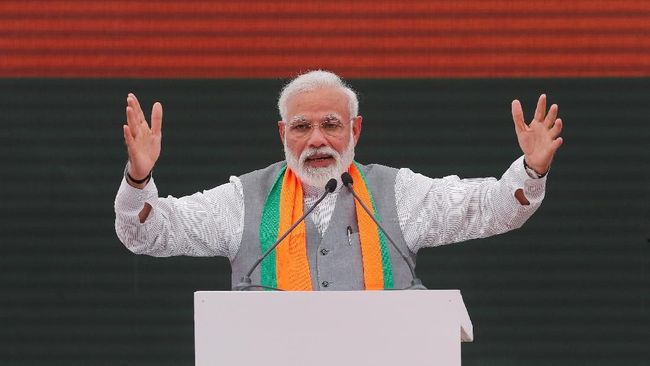Jakarta, CNBC Indonesia – India seems to be turning into the new ‘king’ of Asia. Reports recently said they will get rid of Japan.
The report also mentions that India has overtaken China. Here is the complete list, summarized CNBC IndonesiaTuesday (6/12/2022).
1. Overtake Japan
Citing S&P Global and Morgan Stanley, India is projected to become the world’s third largest economy by 2030, behind the two superpowers, the United States (US) and China. Its economy will surpass Asian countries, Japan, including European countries, Germany and the United Kingdom.
S&P forecasts that gross domestic product (GDP) growth will average 6.3% through 2030, while Morgan Stanley expects India’s GDP to more than double by 2031.
“India has the conditions for an economic boom driven by offshoring, investment in manufacturing, energy transition and a developed digital infrastructure of the country,” Morgan Stanley analysts led by Ridham Desai and Girish Acchipalia wrote in the report, quoted by CNBC International.
“These drivers will make the economy and the stock market [India] third largest in the world before the end of the decade.”
India reported year-on-year (yoy/yoy) GDP growth of 6.3% in the third quarter of 2022, slightly higher than the Reuters survey estimate of 6.2%. Previously, India had recorded 13.5% year-on-year growth in the second quarter of 2022, supported by strong domestic demand in the country’s services sector.
Meanwhile, S&P’s projections hinge on India’s continued trade and financial liberalization. Also included are labor market reforms and investment in India’s infrastructure and human capital.
“This is a reasonable expectation from India, which has a lot to ‘catch up’ in terms of economic growth and per capita income,” said Dhiraj Nim, economist for the Australia and New Zealand Banking Group Research.
In detail, there is one thing that makes the prediction come true. Namely India’s strong desire to become a manufacturing hub.
Their main vehicle for doing this is through the Production-Related Incentives Scheme (PLIS). The so-called PLIS, introduced in 2020, offers incentives to domestic and foreign investors in the form of tax breaks and permits, among other stimuli.
“The government is very likely to rely on PLIS as a tool to make the Indian economy more export-oriented and more interconnected in global supply chains,” S&P analysts wrote.
Morgan Stanley forecasts that manufacturing share of India’s GDP will increase from 15.6% of GDP today to 21% in 2031. This implies that manufacturing revenue could triple from the current $447 billion to about $1.49 trillion .
“Multinational corporations are more optimistic than ever about investment in India…and the government is encouraging investment by building infrastructure and providing land for factories,” the report said.
There are, however, risk factors, including a prolonged global recession. This is because India is a heavily trade dependent economy with nearly 20% of its domestic output being exported.
2. Start getting rid of China
Not just the Asian economic giant, India is also believed to be starting to become the new debt giant in Asia. In relationships Financial TimesIndia has stepped up its efforts to extend credit worth tens of billions of dollars to neighboring countries, including beneficiaries of China’s Belt and Road (BRI) grant.
This includes those currently struggling financially such as Sri Lanka and the Maldives. In the Maldives, India funded the US$500 million (Rp 7.7 trillion) ‘Male Raya Connectivity Project’, which also built a 7km-long bridge linking the capital to several other islands in the vicinity.
“Narendra Modi’s government is starting to develop a sense that India needs to do something,” said C Raja Mohan, a senior fellow at the Asian Institute of Public Policy in Delhi.
“The geopolitical dispute with China is much livelier,” he added.
India’s role as a creditor has grown rapidly. Loans through India’s Development Partnership administration have nearly tripled in value since Modi took office in 2014 compared to the previous eight-year period to a total of $32.5 billion.
“India’s cumulative development aid since independence in 1947 has nearly doubled, from $55 billion to $107 billion since 2014,” according to the government-backed RIS think tank.
While still below the Chinese scale, India has provided more than 300 credit lines for some 600 projects, ranging from a cement plant in Djibouti to a bridge in the Maldives. India has also funded everything from training courses to the restoration of overseas cultural sites such as mosques and temples.
“India doesn’t have the capacity to expand as far as BRI. But it is doing something, in its scope, where it offers competition to China,” Mohan added.
Next article
Beware of the “tomato flu” epidemic in this country, which attacks children
(sef/sef)


